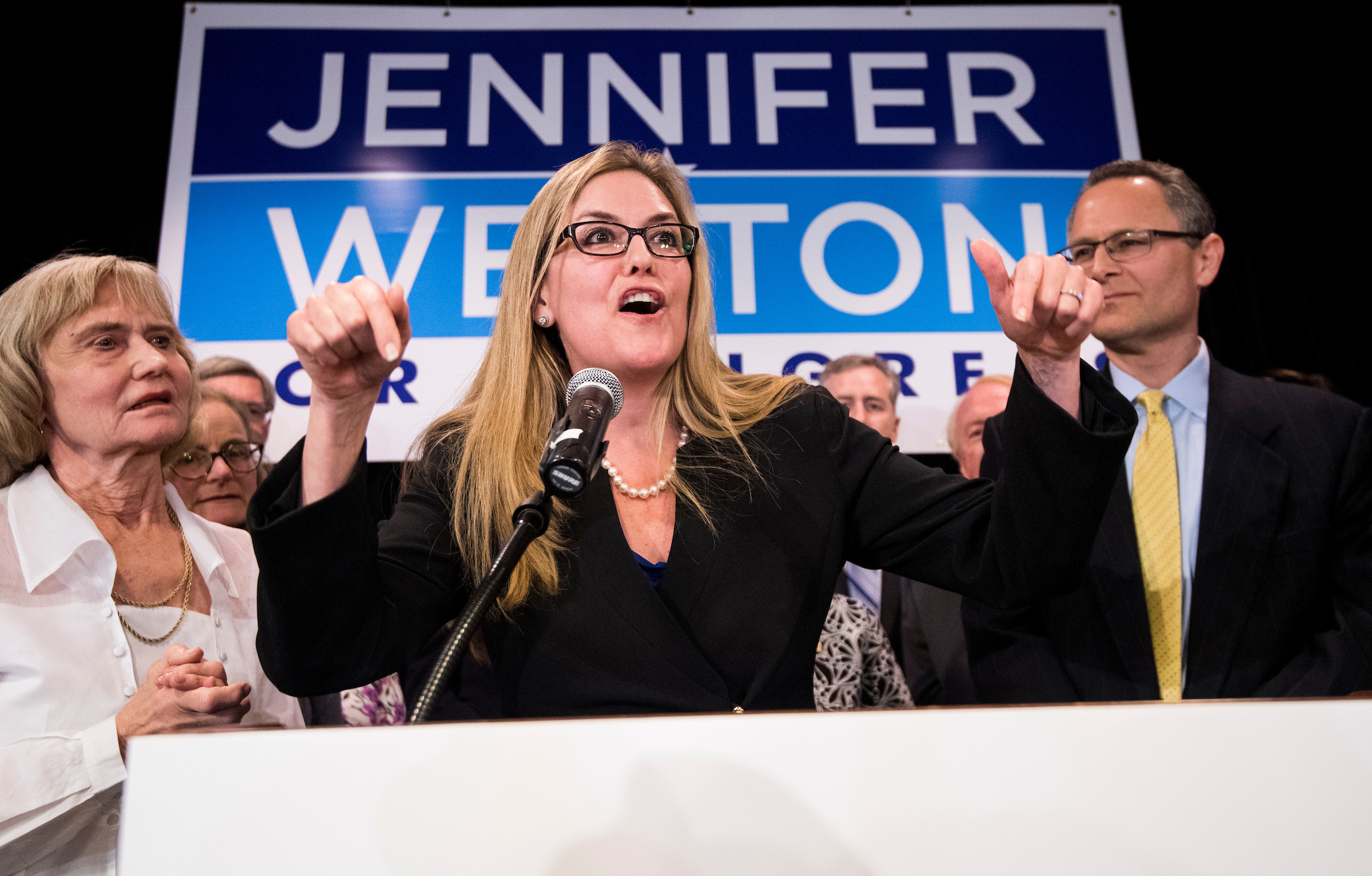In Suburban Strongholds, Blue Wave a Republican Wipeout
Democrats expected to hold over two thirds of suburban House seats next year

Tuesday’s midterm elections have done more than surge Democrats into a respectable House majority: It also wiped out a large chunk of Republicans’ support in suburban strongholds, portending a significant shift in the political alignment of white suburbanites in the Trump era.
Almost all of the House Democratic gains came from the suburbs: They are projected to flip over two dozen seats in primarily suburban districts, sweeping out once-comfortable Republican incumbents including Reps. Pete Sessions in Texas, Peter Roskam in Illinois, and Erik Paulsen in Minnesota.
After the last votes are counted, Democrats will likely command more than two-thirds of the nation’s suburban seats. Meanwhile, New York Democrat Max Rose’s upset win over Rep. Dan Donovan in Staten Island dismantled one of the GOP’s last urban bastions.
Watch: Wexton Win Was One of Tuesday’s First Flips
How long Democrats can hold on to their new suburban footholds remains to be seen. But their new footholds in suburban districts at least appear to correspond with a longer-term realignment of Democrats and Republicans into urban and rural strongholds. The results reflect an emerging common wisdom in Washington: The nation is split into two camps, and they have never felt further apart.
Even amid sizable gains for Democrats on Tuesday, Republicans’ strong appeal among rural populations — who are more likely to be white, working class and not college educated compared to the rest of the country — is largely untouched. The GOP looks poised for a net loss of only two seats in more sparsely populated districts, and will still hold an overwhelming majority of small-town districts.
Democrats were not always shut out of these seats: In 2008, a strong year for the party, they even won a majority of the country’s purely rural seats. But 2010 — a historic wave year for Republicans — brought a seismic shift. Democrats have represented no more than a quarter of rural districts ever since.
The midterm results appear to reflect a decadeslong realignment of party coalitions, according to Georgetown University professor Hans Noel. White, working-class voters without college degrees are joining the Republican camp, while wealthier college-educated whites, who populate the suburbs, have more recently become uneasy about the GOP’s direction.
“I suspect that when we look back at this period 20 or 30 years from now, that will be a trend that will emerge from the noise,” Noel said, before cautioning that it was still too early to say exactly how significant the shift is or how long it will last.
Dan Sena, the executive director of the Democratic Congressional Campaign Committee, said Wednesday that he is optimistic suburban areas will keep turning bluer.
“One of the key pieces that we have learned over the last two years of watching Trump and studying Trump is there is an opposite and equal reaction across the country whenever he does something. We call it shaking the snow globe,” Sena said. “There was an opposite reaction in highly suburban areas. We were there to maximize on it.”
Meanwhile, Democratic gains in Republican strongholds are widely interpreted as an impassioned rejection of Trump’s agenda and style. The president was a dominating presence in the midterms, appearing frequently in campaign rallies, on Twitter and on the news — just about everywhere except the ballot. He was also at the front of many voters’ minds, according to AP VoteCast, a national survey of the electorate: 38 percent of respondents said they voted to oppose Trump, while 26 percent said they voted in support of his agenda.
Given Trump’s suburban unpopularity, some vulnerable incumbents struggled throughout the campaign to keep Trump’s reputation at a distance in voters’ minds. In Virginia’s 10th District in the D.C. suburbs, Democrats ran ads against ousted in GOP Rep. Barbara Comstock painting her as a Trump ally — and calling her “Barbara Trumpstock.” (Comstock lost to her Democratic challenger, Jennifer Wexton, by 8 points.)
Kathy Cramer, a professor of political science at the University of Wisconsin-Madison, said she has been observing the suburban-rural split for a decade in her home state of Wisconsin. Republican politicians, and Trump in particular, have learned how to tap into the racial, cultural and economic anxieties of white rural voters
“It’s been growing for a long time, but I think it’s different now, because a lot of these trends have come to a head,” Cramer said. “And politicians have learned to tap into them. In recent years, President Trump included, we have seen politicians who are very skilled at playing on people’s fears.”





